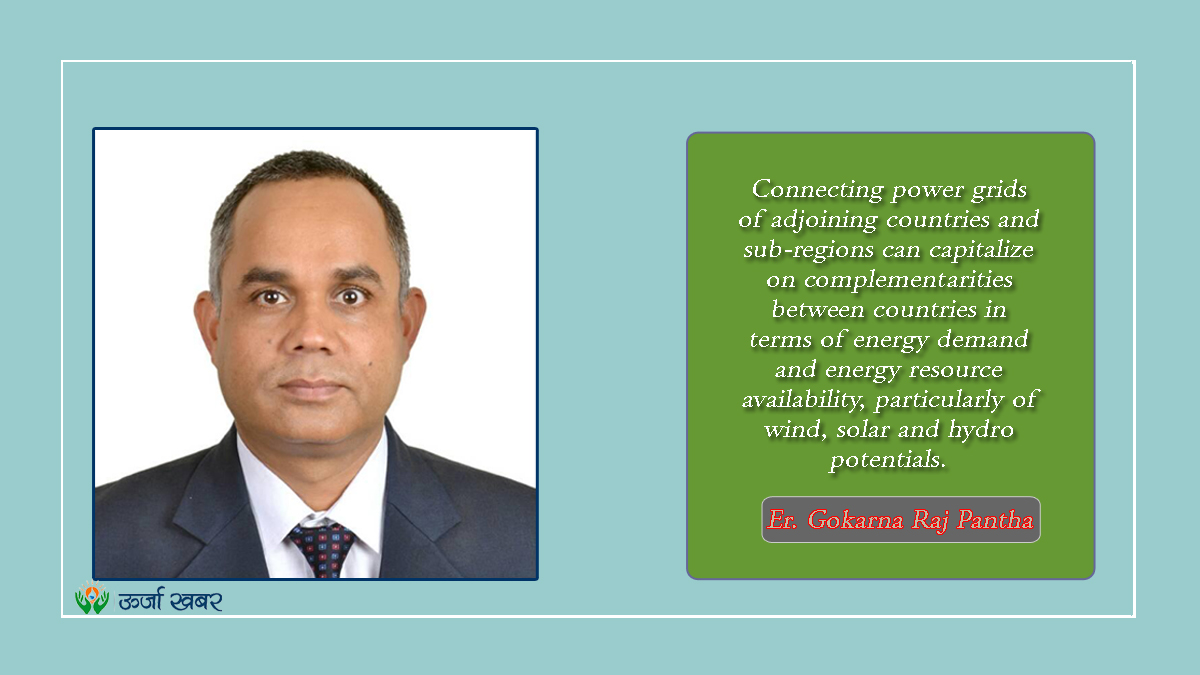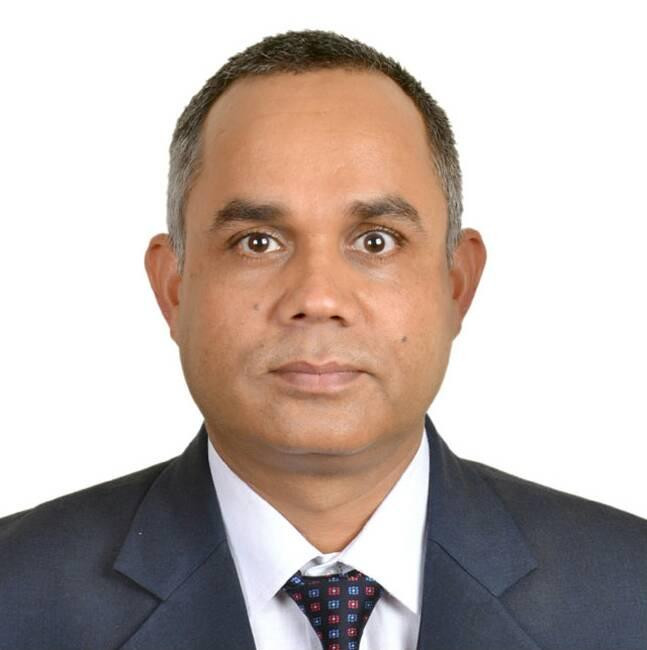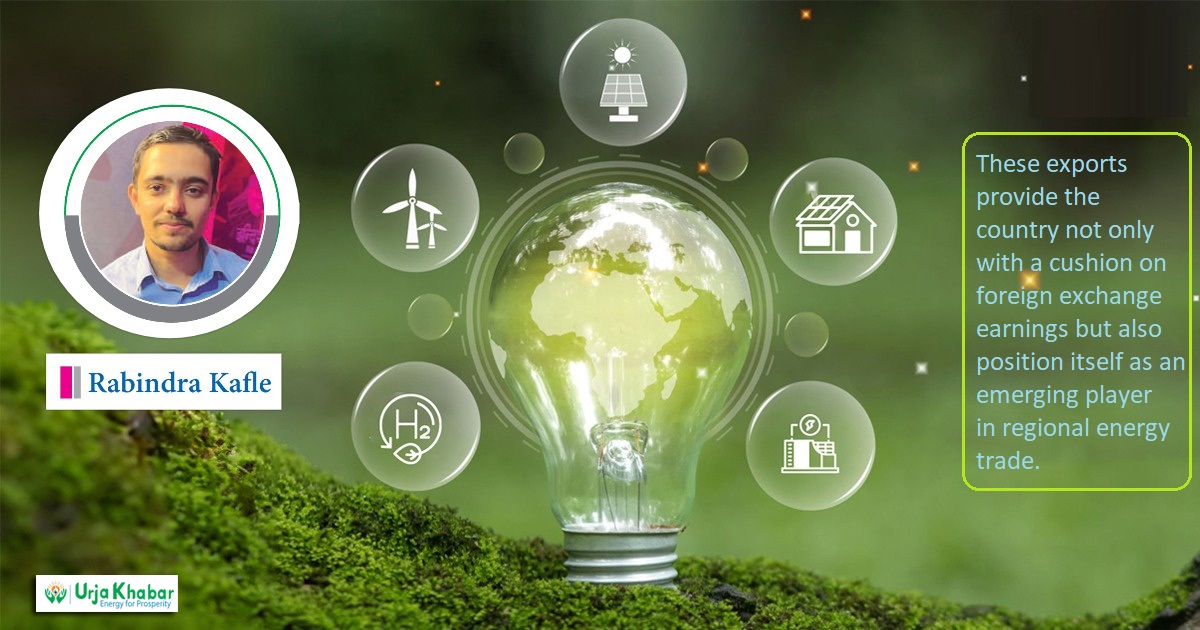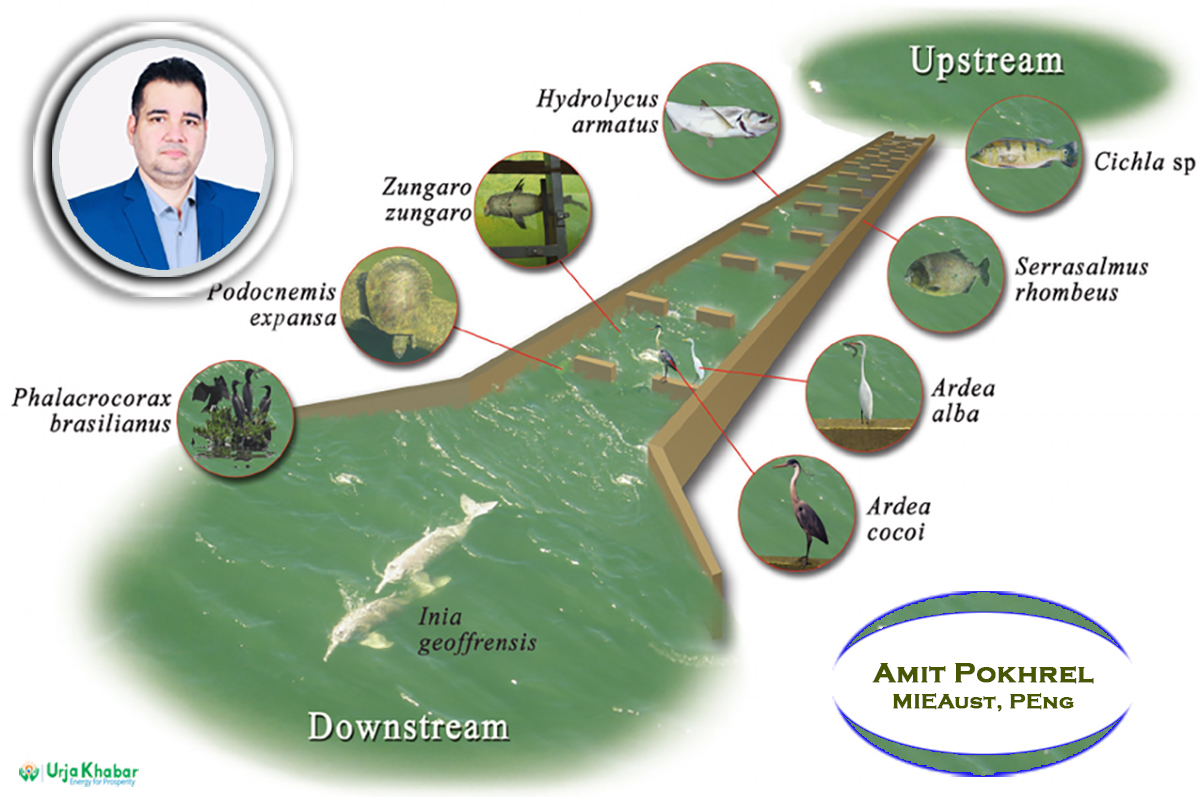Energy Update
Energy Connectivity and Sustainable Development of Hydropower in Nepal

Background
Nepal's total hydropower potential is 83,000 MW out of which 42,000 MW is considered economically viable. Nepal’s present installed hydropower capacity is about 2,000 MW.

Despite having a huge potential in the area, the country largely depends on fossil fuels. The country’s energy consumption pattern mostly relies on traditional sources such as firewood, agricultural residues and animal wastes, which contribute about 68 percent of the energy requirements. The shares of petroleum products and electricity along with hydropower and other sources in total energy consumption are 23 percent and 9 percent respectively. (Source: Economic Survey F/Y 2020/21, Ministry of Finance)
The realization of prospects for a very large increase in hydropower generation would allow Nepal to meet its domestic energy demands as well as export this renewable energy to its neighboring countries. To benefit from the huge potential, the cross-border energy trade is extremely important for the country. Apart from others, cross-border transmission lines are the prerequisite for the sustainable development of hydropower projects in Nepal.

Hydropower Development in Nepal
The first hydropower plant of 500 kW (Pharping) hydropower project, was constructed in 1911. Nepal Electricity Authority (NEA), the sole government authority dealing with energy, has been involved in the generation, transmission, and distribution of electricity projects since 1985. The private sector entered the business only after the country adopted a free enterprise economic system in 1992.
Later on, the directive for power purchase agreement (PPA) was adopted in 1998. Based on this directive, NEA started fixing unit rates for the power produced from the private sector. This decision geared up the Nepalese private sector in the development of hydropower projects. Massive economic activities paved the way to high energy demands, causing a shortfall of energy availability. As a result of this, Nepal faced continuous load-shedding since 2005. Despite lots of efforts made by the government and private sectors, the load-shedding continued to exist by the end of 2016.
After the vigorous initiation of government through policy revisions, management improvements, increasing capacity of transmission lines, import of electricity from India, etc. load-shedding of major cities, including Kathmandu has been solved since 2016. From May 2018, there is no power cut at all, people connected to the grid are getting uninterrupted supply. It is to be noted that Nepal achieved comparatively higher annual growth in GDP during the past three consecutive years–7.7 percent in F/Y 2016/17, 6.3 percent in 2017/18 and 7.1 percent in 2018/19, which can be attributed largely to the improvement in the power supply system.
Of late, Nepal has been witnessing growing interest from foreign investors/contractors to construct hydropower projects. While investors from the US, Norway and China have already constructed several hydropower projects, those from India and South Korea have recently been involved in the construction of large hydro projects. These are some good examples of foreign investment in Nepal’s hydropower business.
Issues of energy policy, development modality and hydropower licensing:
The country’s first-ever hydropower development policy was enforced in 1992 to attract the private sectors. The Water Resources Act and related regulations also came into force in the same year. Likewise, Electricity Act and related regulations were endorsed to specify legislations for the power sector. Among others, new Foreign Investment and Technology Transfer Act 2019 have been enacted to facilitate the foreign investor. The Environment Protection Act was revised in 2020 and related regulations were implemented in 2021. Although the new hydropower development policy was enforced a long time back in 2001, the umbrella act is yet to come online.
NEA buys the electricity from independent power producers (IPP) and sells it to the market (households and industries). Butwal Power Company Limited, a private company with less than 10% government share, is also generating, transmitting and distributing the electricity for domestic use. There are some co-operatives working on the distribution of electricity by taking the bulk energy from NEA. Nepal's neighbors, China and India in particular, are the economic giants and are the big markets for energy. Bangladesh and Pakistan are other nearby neighbors that provide high potential of markets for Nepal’s produced energy. However, as of now, the cross-border transmission line has appeared as the main bottleneck for exporting and importing electricity.
Further, the government came up with a commitment to developing the country’s energy sector in the fifth national plan (1975-1980). In the line, different measures were introduced in the sixth plan (1980-1985) and in the seventh plan (1985-1990) to encourage clean energy generation. During this period, the licensing was eased while and income tax was waived for micro-hydro and a subsidy of 50-75% was introduced in add-on electrification.
Micro hydroelectricity and mini hydroelectricity projects were considered important tools for agriculture development and cottage industries. Through the eighth plan (1992-1997), the government introduced a hydropower development policy and established Alternate Energy Promotion Center to look after renewable energy in the country. The ninth plan (1997-2002) and the tenth plan (2002-2007) prioritized hydro energy and introduced the environmental study along with enforcing related directives. The eleventh plan (2007-2010) set the target of mini and micro hydropower generation and established separate units related to energy and environment in all districts. The twelfth plan (2010-2013), thirteenth plan (2013-2016) and fourteenth plan (2016-2019) set energy production and distribution targets.
However, none of these plans achieved the targets of power generation and extension of the transmission lines. Continuing the thriving in the energy sector, Nepal has put efforts in making necessary legal framework and structural development also in the fifteenth plan (2019-2024).
Going through the development modalities of the energy sector's development of the country, the government assumed its responsibility on managing funds (including grants and loans) generated via domestic, bilateral and multilateral basis for Mega Projects during 1911 to 1984 AD. In the following period between 1984 and 1992, NEA undertook the study and development of hydropower projects.
It was in 1992 that the government opened the door for the private sector and Independent Power Producers (IPPs) for power generation. Over the period, the total installed capacity of hydropower projects has reached 1,844 MW while a number of other projects are at different statuses of the survey,
construction and Licensing procedures.
A total of 465 projects have been looking forward to producing 22,927 MW of hydroelectricity while 58 projects, with an earmarked capacity of 3,668 MW have been at the application review stage. The government itself is also in the process to install 51 projects with the capacity cumulating 10,634 MW (DoED, 2021).
Status of License of Hydropower Projects:
| SN | Descriptions | Nos. of Projects | Capacity (MW) |
| 1. | Survey License | 223 | 15,868 |
| 2. | Generation License | 242 | 7,059 |
| 3. | Applications for Survey License | 20 | 499 |
| 4. | Application for Generation License | 38 | 3,169 |
| 5. | Operational Projects | 119 | 1,844 |
| 6. | Government Study/Under Construction | 51 | 10,634 |
| Total | 993 | 39,073 |
Source : Department of Electricity Development
As per the law, any project with a capacity less than 1 MW does not need to take a separate license. Local governments have been authorized to regulate such projects. Separate licenses are required for survey, generation, transmission and distribution for projects with a capacity of more than 1 MW. While the Department of Electricity Development (DoED) grants a license to project up to a capacity of 100 MW, the Ministry of Energy, Water Resources and Irrigation (MoEWRI) issues the licenses for projects of more than 100 MW. DoED facilitates license procedure by receiving the application, processing application for compliance, issuing public notice, granting licenses and it recommends to MoEWRI for more than 100 MW capacities.
The Challenges of Sustainable Hydropower Development:
Nepal, having geography of 87 percent of hills and mountains and more than 6000 perennial rivers, has huge hydropower potential. Owing to the gradients (head) of the rivers, there are huge possibilities of multiple power generations through cascading in a short span of the length of a river. However, due to the number of confronting challenges, the pace of hydropower development is rather very slow and not being able to mitigate domestic demand even in the condition of the minimum per capita energy consumption level.
Financing and investment
The hydropower development calls for a huge investment. Owing to this cost, local private sectors are in a position to invest up to the capacity of 100 MW hydropower projects. However, the mega projects with a capacity of more than 100 MW call for foreign direct investment. Besides, the case of the PPA in inconvertible currency invites controversy at all times. In general, the foreign developers expect a guarantee of payment for purchasing power.
Lack of fund management has always been an issue in hydro projects. Only one bank or financial institution is not sufficient for financial closure for even a 10 MW capacity project. The projects normally go cost overrun due to increasing price of petroleum products, transportation cost, construction material cost and changing designs. But the tariff rate of electricity is rather fixed and does not go at par with an adjustment to the weather and changing time.
Social Issues
Nepal underwent political instability for a long time. The interest of local people in hydropower development is being increased and they have started considering local development as their social responsibility. In many cases, local people have also received an equity share in the local projects. As per the law, up to 10 percent of shares of hydropower projects should be allotted to the local people.
Transmission Lines
The issues of transmission lines and substations have appeared as the main bottlenecks for the development of hydropower projects in Nepal. The cross-border transmission line at the Nepal-India border is not adequate to import and export electricity. There is a complete absence of transmission lines at the northern borders. Owing to the generation of electricity from projects based in rural areas, long stretches of transmission lines are required due to the unavailability of an adequate number of substations nearby. The case of wheeling charges is also not well defined.
Other Challenges
Nepal still draws larger share of its GDP from agriculture. The consumption of energy is substantially residential. The industries are yet to be developed. This has created a low level of per capita electricity consumption. The domestic market needs to be encouraged to use more and more electricity so that handicrafts and small family-based industries will flourish. Owing to the large potential of electricity, sooner or later electricity has to be exported and such comprehensive policies and strategies need to be developed to address this issue. Serious efforts need to be made for sharing the mutual benefit partnership with neighboring counties- China and India.
Energy Connectivity
For every country, the socio-economic transformation of society is a major concern. It is even more painful to live in the status of underdevelopment with a hard-living especially in the condition when abundant resources are lying underutilized. In addition to having sufficient water resources, the demographic structure of Nepal right now has the largest number of people in their working-age group, which is a great opportunity for the country to achieve a faster rate of economic growth. Despite this fact, physical infrastructures are in the poor condition, productivity is very low and the quality of life is miserable.
In this 21st century, the world has become a global village. The economy is the center of strategy for every country. Therefore, every country is now striving for wealth creation through enhancing the production and distribution of goods and services. Adequate and uninterruptible energy supply is an utmost need. Understanding this fact, the new world order has underscored the rate of energy consumption as an indicator to measure economic status.
Nepal, which is now in the status of a developing country, is in dire need of energy for achieving social transformation. There is a need for massive infrastructure development. Besides, there is the opportunity of being a 'transit-point' for two neighboring economic giants. These are a few reasons for resources extraction and utilization. The water resource is the only resource to be harnessed in Nepal besides having high potential human resources to tap the benefits.
Snow-fed rivers originating from mountains are the main source of the country's water resources, which exist almost throughout the year. Large neighboring markets of India and China are other areas to be looked for. The monsoon rain is an added opportunity for Nepal. The rivers fed by monsoon rains carry a huge amount of water, which can be collected in the gorges, which can also be utilized to generate electricity during off-season periods. These all ensure larger prospects for hydropower development in the country.
There are several options for developing conventional 'run-of-river' hydropower projects. Besides, the idea of storage projects is also very important to address the energy demands during dry periods. Such storage projects can be cashed in for multipurpose such as-- water supply, irrigation, industrial use, electricity generation, navigation, etc. The development of cross-border transmission lines is another main issue for the development of hydropower projects to assure its market. Since the concept of the South Asian Association for Regional Cooperation (SAARC) Energy Ring, an interconnected electricity system covering South Asia as was first announced in 2004, some progress has been seen in developing bilateral electricity interconnection and trade in several South Asian countries. However, this progress has not been taken at the same pace across the sub-region, and the vision of the SAARC Energy Ring still appears elusive.
Energy connectivity, with a focus on power grids as a means of enhancing the sustainability and security of the region’s energy supply, can be promoted through regional cooperation. This can help countries manage their surplus and deficit electricity in a mutually beneficial way and open up opportunities for large-scale development of renewable. This not only supports economic growth but also provides countries with greater opportunities to materialize their ambitious goals of reducing emissions, with strategies envisioned under the Paris Agreement and combat emerging issues such as air pollution.
Internationally there is a growing focus on enhancing power grid connectivity to address multiple objectives including power system reliability, cost-effectiveness, security and de-carbonization as well as sustainability. Globally, there are several examples of successful power system integration in other regions of the world which provide useful reference points and guidance for the region. Presently, cross-border electricity trade and initiation is limited to primarily a bilateral exchange, while there is a need to promote it at a multilateral level. Nepal has a bilateral energy cooperation mechanism with India,
China, Bangladesh and Austria.
The Agreement between Nepal and India on Electric Trade, Cross Border Transmission Interconnection and Grid Connectivity was signed on October 21, 2014. A Joint Steering Committee, Joint Working Group and Joint Technical Teams are working to promote and facilitate the cooperation.
The MoU was signed between Nepal and China on energy cooperation in June 2018. The first bilateral meeting of the Nepal-China Joint Implementation Mechanism on Energy Cooperation was convened at the secretary level on September 18, 2018.
The MOU was signed between Nepal and Bangladesh on Cooperation in the field of Power Sector on 10th August 2018. The Joint Steering Committee, Joint Working Group and Joint Technical Teams are working to promote and facilitate the cooperation. Likewise, Nepal and Austria also signed a MoU on Hydropower Infrastructure Technology Cooperation to enhance renewable energy and hydropower cooperation through ministerial-level collaboration and the facilitation of private sector activity on 22nd May 2019. The Joint Working Group has been formulated and the first meeting of the group was conducted on 21st October 2019.
The potential for enhanced power grid connectivity and greater cross-border electricity trade in the Asia-Pacific is significant. Connecting power grids of adjoining countries and sub-regions can capitalize on complementarities between countries in terms of energy demand and energy resource availability, particularly of wind, solar and hydro potentials. Utilizing power grid connectivity can enhance the availability and affordability of electricity and accelerate the utilization of renewable. The realization of a vision of an interconnected regional power system requires the development of a regional framework and appropriate institutions to support and coordinate it. By building upon, and providing impetus to existing sub-regional initiatives, it will enable coordination among various institutions and serve to progressively remove barriers to energy interconnection.
The electricity sector is highly regulated which implies that the process of integration of national power grids requires enhanced regional energy cooperation between the countries. Hence the creation of regional institutional governance is essential to guide the progress of energy connectivity and integration. This requires a transformative partnership among the countries with support from regional and sub-regional institutions to create regional institutional architecture that can guide the process. The experience from other sub-regions has underscored the central role that these intuitions play in the integration process.
There are some issues to be considered for the establishment of energy connectivity. The consensus at the political level only can work for the bilateral and multilateral issues. Building trust and political consensus among the countries is the prerequisite for energy connectivity. At the bilateral level, intergovernmental institutions are working for cooperation.
It should be extended the networking of sub-regional intergovernmental institutions to reach regional cooperation. The policy and regulatory frameworks for transmission planning and operating systems should be harmonized and institutionalized in a coordinated way. Mobilizing Investment and ensuring the financial viability in Cross-Border Grid and Generation Infrastructure is the most significant issue for which different modalities should be studied. Capacity buildings, information sharing, learning and implementing the best practices are also the major issues for energy connectivity.
Hydropower Projects:
The Electricity Regulatory Commission, Act 2018 has been approved by the parliament and the Electricity Regulatory Commission (ERC) is functional now. Similarly, the National Energy Efficiency Strategy, 2018 has also been approved in November 2018. The Water Resources Policy, Water Resources Act, Electricity Act, Renewable Energy Promotion Act and Energy Efficiency and Conservation Act are being drafted. The Fifteenth Five Year Plan has incorporated adequate provisions to address the issues of the energy sector. The Present Status and Future Roadmap of Energy, Water Resources and Irrigation Sector, 2018 (White Paper issued by Hon’ble Minister, MoEWRI) has undertaken an in-depth review of the energy sector and has proposed a future road map for the overall development of the sector.
Similarly, the government has approved “Sustainable Development Goals, Status and Roadmap: 2016-2030”.Nepal’s plan, policies and programs are aligned with the SDGs. The current five-year plan has defined clearly the vision, goals, objectives, strategies and working policies. The periodic plan has talked about strategies to increase investment in hydropower development including the T/L and distribution of electricity; encouraging usage of renewable energy, and improved energy security and institutional reform.
A high-level Steering Committee has been formed under the chairmanship of Rt. Honorable Prime Minister. Under this committee, a coordination committee and eight thematic committees have been constituted. The latter two committees are being led by National Planning Commission. Currently, the thematic committees are working to analyze and revise some local indicators in consultation/coordination with the concerned ministries and other related stakeholders. The Annual Action Plans have been formulated such that the evaluation and monitoring of the programs relating to SDG-7 can be covered.
(Mr. Pantha, is a Secretary of Electricity Regulation Commission; This Article was Published in Urja Khabar Half Yearly Magazine in 2021 16th Dec.)
Conversation

- Info. Dept. Reg. No. : 254/073/74
- Telephone : +977-1-5321303
- Email : [email protected]













